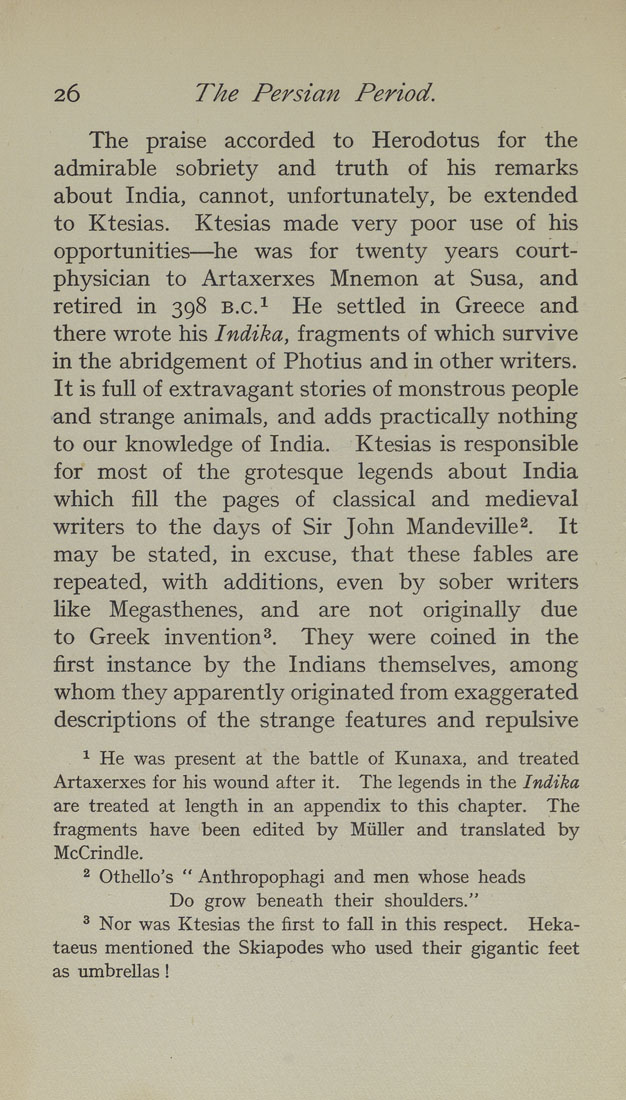26 The Persian Period.
The praise accorded to Herodotus for the
admirable sobriety and truth of his remarks
about India, cannot, unfortunately, be extended
to Ktesias. Ktesias made very poor use of his
opportunities—^he was for twenty years court-
physician to Artaxerxes Mnemon at Susa, and
retired in 398 B.c.^ He settled in Greece and
there wrote his Indika, fragments of which survive
in the abridgement of Photius and in other writers.
It is full of extravagant stories of monstrous people
and strange animals, and adds practically nothing
to our knowledge of India. Ktesias is responsible
for most of the grotesque legends about India
which fill the pages of classical and medieval
writers to the days of Sir John Mandeville^. It
may be stated, in excuse, that these fables are
repeated, with additions, even by sober writers
like Megasthenes, and are not originally due
to Greek invention^. They were coined in the
first instance by the Indians themselves, among
whom they apparently originated from exaggerated
descriptions of the strange features and repulsive
^ He was present at the battle of Kunaxa, and treated
Artaxerxes for his wound after it. The legends in the Indika
are treated at length in an appendix to this chapter. The
fragments have been edited by Miiller and translated by
McCrindle,
2 Othello's " Anthropophagi and men whose heads
Do grow beneath their shoulders,"
^ Nor was Ktesias the first to fall in this respect, Heka¬
taeus mentioned the Skiapodes who used their gigantic feet
as umbrellas!
|








